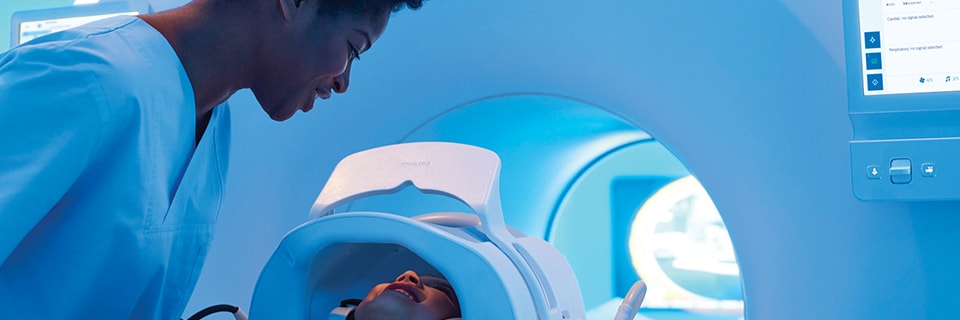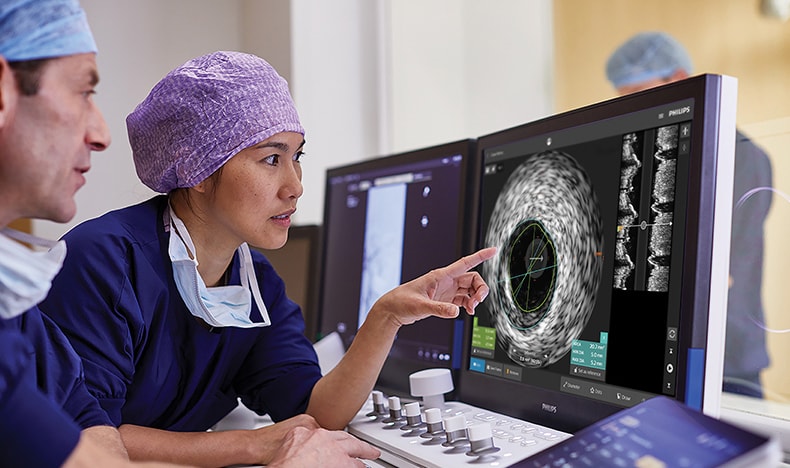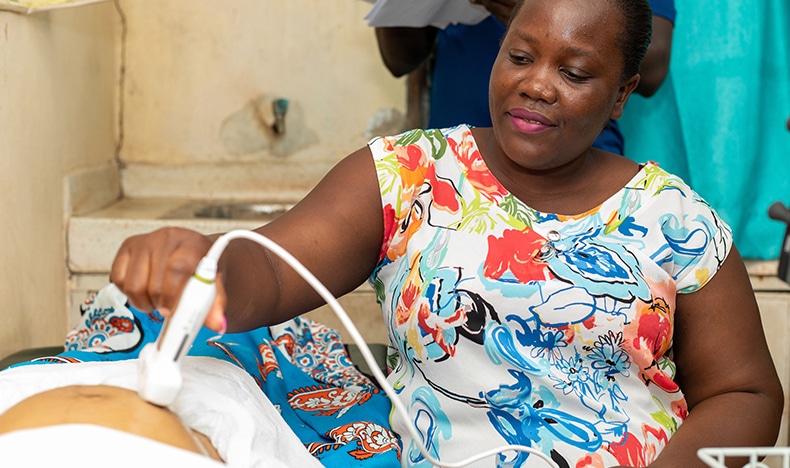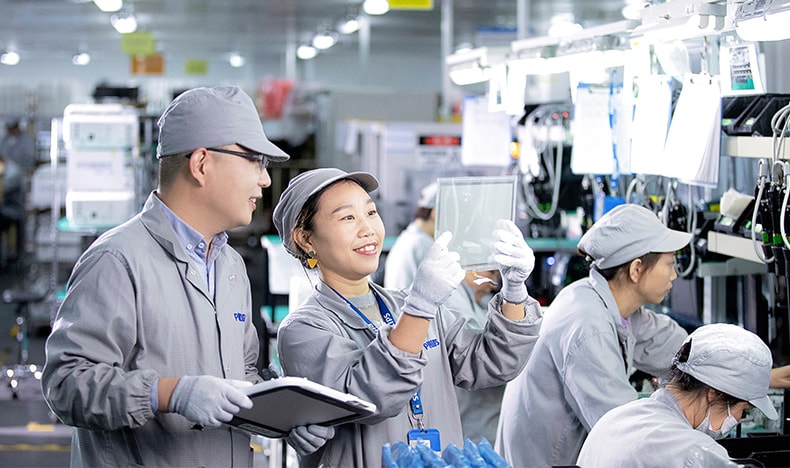Our strategic focus
A strategy of focused organic growth, founded on clear choices in business and innovation, and improved execution

Today, most healthcare systems are struggling to keep up with the ever-rising need for, and cost of, healthcare, while systemic staff shortages and financial resource constraints increase the pressure. Climate change is impacting both environmental and human health, compounding the stress on our healthcare systems and influencing consumer behavior. At the same time, in both the hospital and the home, emerging technologies and AI are affecting our lives like never before.
At Philips, our purpose is to improve people’s health and well-being through meaningful innovation. As such, we see huge opportunities to make a difference through innovation, design, and sustainability – partnering with our healthcare customers to increase productivity and deliver better care for more people through our innovation platforms of monitoring, imaging, interventional and enterprise informatics. And empowering more people to take care of their health and well-being through our personal health propositions.

Our plan to create value with sustainable impact
As a health technology company, Philips is committed to driving progressive value creation through a strategy of focused organic growth, scalable patient- and people-centric innovation, and focus on reliable execution.
Philips has significant strengths to build on. We have a portfolio of patient- and people-centric innovations in hardware, software, AI and services, supporting care in the hospital and in the home. And we are the preferred strategic and innovation partner for many customers across the globe.

A strategy of focused growth
We operate in growing market segments, where attractive margins provide a foundation for sustainable value creation. To deliver on our strategy, we make clear portfolio choices. We are concentrating our resources on areas where we have strong positions and can accelerate growth and expand margins more quickly – Image Guided Therapy, Monitoring, Ultrasound, and Personal Health. In doing so, we will focus to support clinical workflows in areas where we have domain leadership, such as cardiology, and that build on our deep strength in the Intensive Care Unit (ICU) and Cath Lab.
In Diagnostic Imaging, our goal is to help healthcare providers who need to do more with less. We will do so by leveraging our differentiating, AI-enabled innovations to increase their imaging workflow productivity, departmental efficiency and financial sustainability and, by doing so, improve our margins and drive uptake of our services supporting care pathways.
We help our customers to unlock actionable insights from pools of medical imaging data, vital signs (patient monitoring) data and insights generated with the support of artificial intelligence (AI) to optimize care delivery across the patient journey. With the scaling of our end-to-end multi-vendor Enterprise Informatics business, we aim to grow our platforms such as radiology, pathology and remote care delivery across health systems and care settings, while building long-term customer relationships, generating recurring revenue and enabling the hardware business to maintain a competitive advantage.
Additionally, we remain committed to rebuilding our position in Sleep & Respiratory Care while continuing to resolve the effects of the Respironics recall.

Scalable patient- and people-centric innovation
At Philips, we’ve been innovating to improve lives for over 130 years. People’s needs are at the very heart of how we innovate and design for sustainable impact with a ‘safety and quality first’ mindset.
Innovation is our core strength and will continue to be our core differentiator. Recent industry trends have accelerated the adoption of technology within healthcare. We are embracing these trends and shifting our innovation to a more patient- and people-centric model closer to our customers. This starts with asking: What do people – in our case, patients and clinicians, nurses and technicians, consumers – really need? And how can we best support healthcare professionals with their workflow?
In our businesses, we are focusing our efforts and resources on fewer projects offering greater scale and impact on patient outcomes and care providers’ clinical, operational and sustainability challenges. We do this by balancing new, breakthrough innovations and continuous optimized lifecycle management, through upgrades and services, of Philips products and systems already deployed in care settings. We bring together expertise across the product lifecycle, from research through serviceability, to ensure our innovations drive maximum impact for our customers and consumers – delivering a superior experience and value, with minimum environmental impact.

Execution as the value driver
Enabled by a culture of patient- and people-centricity, accountability and impact, supported by strong health technology capabilities, we see effective execution as the key value driver of our plan and a key driver for change. We are focusing on:
- Patient safety and quality – remains our highest priority
- End-to-end supply chain resilience
- A simplified operating model with an agile way of working
First, patient safety and quality is at the heart of everything we do. We have stepped up accountability for patient safety and quality, for example, by elevating oversight to the Executive Committee and creating a new organization, with stronger processes and more effective early warning systems in the businesses, as well as giving all employees dedicated patient safety and quality objectives. We are investing in systems, capabilities and training to facilitate identification of potential patient safety or quality issues. And we are taking the learnings from the Respironics recall to improve our ability to correctly assess patient safety and provide quality of the highest standard across Philips and in delivery to patients, customers and consumers.
Second, we are re-shaping our supply chain set-up so we can ensure reliable delivery of products and services and deliver our order book. We have moved away from being organized around central functions to a structure where we align procurement and supply chain to our businesses. A more regionalized structure combined with dual sourcing that can work effectively even when volatile conditions emerge in different parts of the world. We are pruning our product portfolio, which includes a long tail of smaller product lines and older generations of our products. We also have a dedicated team redesigning products and components to increase our resilience to more volatile demand.
Finally, we are implementing our simplified operating model to enable us to better serve patients, customers and consumers, as well as ensuring that our cost of organization remains competitive in an inflationary and cost-driven environment, and that we are more agile in responding to changes in the market. Prime accountability has been assigned to the businesses, supported by lean Functions and Regions following tailored models, all guided by fewer KPIs and more focused targets.

Driving impact for people and planet
Building on our strong heritage in environmental sustainability and social impact, we have operationalized our purpose by adopting a fully integrated approach to doing business responsibly and sustainably. We are partnering with stakeholders to drive environmental, social and governance (ESG) priorities and make a global impact. For example:
- We aim to improve the lives of 2.5 billion people a year, including 400 million in underserved communities, by 2030
- We will continue to operate carbon-neutrally and are partnering with customers and suppliers on reducing emissions across the full value chain in line with science-based targets
- We aim to increase circular revenues from 15% of sales in 2020 to 25% of sales by 2025
Delivering on our plan
With our global reach, market leadership positions, deep clinical and technological insights, and patient- and people-focused innovation, we believe Philips is well positioned to help deliver real change across healthcare. Fueled by our purpose and supported by a reinvigorated culture of accountability and empowerment, as well as strengthened health technology capabilities, we aim to progressively create value with sustainable impact.




